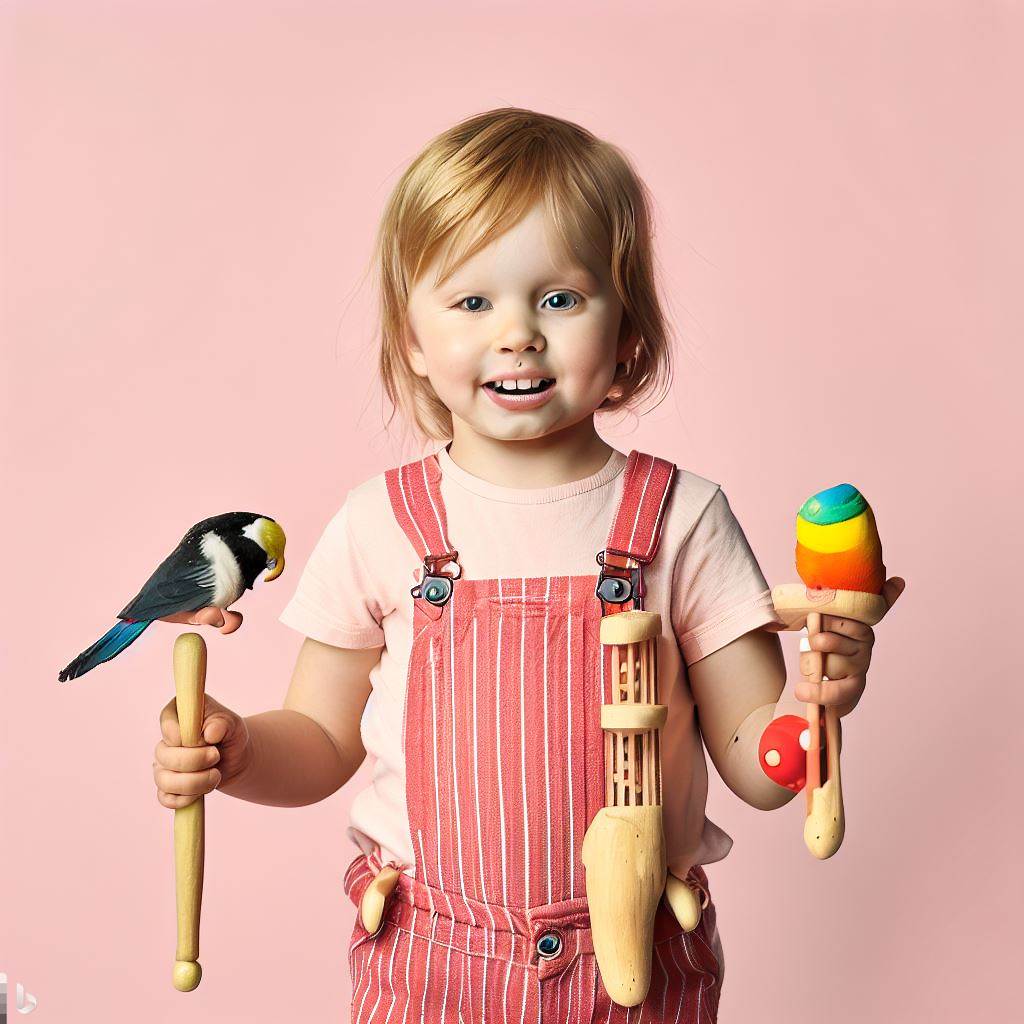Most of us know that parrots need toys to keep them entertained, safe from boredom and to help keep their beaks trimmed. But how many of us have considered using edible toys?Edible toys are a good way to teach our birds to eat new foods, are a good way to present large pieces of food, a way to give your bird a treat and a way to help your bird work to find his food. Many birds need exercise or a bit of a challenge. An edible toy can be the answer. Another benefit of edible toys is that they are renewable or refreshable and thus inexpensive.
One way to provide edible toys is to use a skewer. Various size skewers are offered by bird supply companies. These usually have a link at one end and a removable cap at the other. Various foods can be placed on the skewer and then it can be hung in the cage or on a gym. Placing the skewer in corners or away from the perches will encourage a bird to exercise as it climbs and hangs on to enjoy the foods. What a good way to allow a bird to see and try new foods. Skewers are also good for large pieces of food, such as a radish, chunk of carrot, lettuce leaves, etc. This toy once consumed by a bird, can be refreshed with different foods and helps provide a more varied diet. It can appear to be a new and interesting toy each time it is refilled and is certainly less expensive than replacing wooden toys.
You can also take a piece of wood with some holes drilled partially through it and imbed nuts in the holes. Hang it in the cage so that the bird has to dig them out to enjoy them.
Try hanging a stalk of brussel sprouts or broccoli in the cage. Watch your bird swing on it as he learns to eat this vegetable.
String pasta on some cotton string or sisal rope. Use various colors and shapes. Birds will play with the pasta, hanging onto the toy in various positions, while they slide the pieces about and enjoy the sounds they make. The pasta, if eaten, provides grain in the bird’s diet. Also try using various cereals, such as Cheerios, popcorn, cranberries, nuts, etc. Combine different items. You can even intersperse beads or small pieces of wood between the food pieces for more variety. Use your imagination. This is another inexpensive toy.
Hide favorite foods, nuts or seeds in small cardboard boxes. Place the boxes on the cage bottom or other places where you take the birds out to play. They will enjoy turning and tossing the boxes with their feet, as the toy makes funny sounds. Finally they will tear through the cardboard to get to the treats inside.
You can also use small acrylic bottles with removable caps (be sure it isn’t one your bird can splinter). Birds will spend time playing with the toy and figuring out how to open the top to get to the treat. They will get exercise as they are kept busy and interested.
Try putting pieces of food in a larger box with a large hole in it. When placed on a flat surface, birds will enter the box to reach the food.
Another approach is to wedge carrots, broccoli or other large pieces of food in between the bars of a cage. Birds are naturally curious and will investigate this strange new thing.
You can even make a carrot or celery mop. Take a carrot with some of the greens attached. Use a vegetable peeler to create strings hanging from the top. Attach to the cage by running a piece of rope through the top end. This works with beets, too.
If you use your imagination, you can also come up with many ideas of your own.
Have fun as you make these toys and give your birds pleasure.

